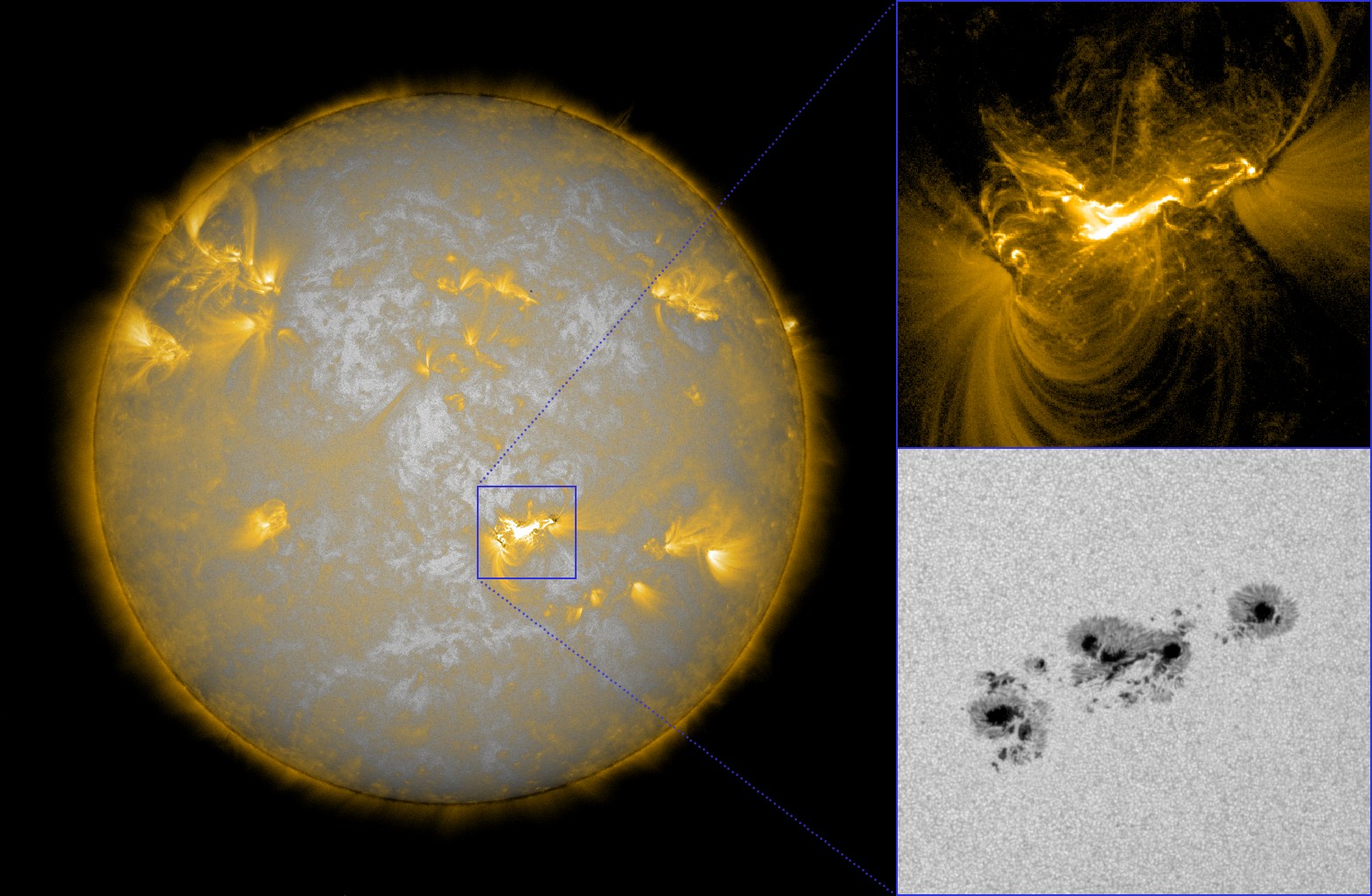Rotating Sunspots Triggered Massive Solar Flare

The most powerful solar flare unleashed from the sun in nearly five years was triggered by interactions between dark regions on the solar surface that rotate and twist the sun's magnetic field, a new study shows.
Researchers at the University of Central Lancashire in England studied observations of the sun's flaring region taken over a five-day period by NASA's Solar Dynamics Observatory (SDO). They found that the rotation of these dark regions, called sunspots, played a role in a massive solar flare that erupted from the sun in February.
"Sunspots are features where the magnetic field generated in the sun's interior pushes through the surface and into the atmosphere," said Daniel Brown, the study's lead researcher. "Twisting the sun's magnetic field is like twisting an elastic band. At first you store energy in the elastic, but if you twist too much the elastic band snaps, releasing the stored energy. Similarly, rotating sunspots store energy in the sun's atmospheric magnetic field. If they twist too much, the magnetic field breaks, releasing energy in a flash of light and heat which makes up the solar flare." [Amazing New Sun Photos From Space]
Brown presented the findings on April 20 at the Royal Astronomical Society's National Astronomy Meeting in Wales.
The flare erupted at 8:50 p.m. EST on Feb.14 (0150 GMT Feb. 15), sending a massive wave of charged particles into space. This mega flare, registered as Class X2.2, was the largest one recorded since December 2006, and was the first flare of the current solar cycle to receive the most powerful "X-Class" designation.
Class X flares are the strongest types of solar flares that can erupt from the sun. There are also two weaker categories: Class M flares, which are medium strength but still powerful, and Class C flares, which are the weakest storms from the sun.
From the five days of observation from SDO, Brown found that the active flaring region contained five newly emerged sunspots. All five of the sunspots rotated between 50 and 130 degrees, some in a clockwise direction and others in a counterclockwise direction, over the five days of observations.
Get the Space.com Newsletter
Breaking space news, the latest updates on rocket launches, skywatching events and more!
"Rotating sunspots are an extremely efficient way to inject energy into the magnetic field of the sun's atmosphere," Brown said. "With five sunspots rotating at the same time enough energy has been injected into the atmospheric magnetic field to produce the largest solar flare seen for almost 5 years."
In addition to the large X-class flare, the same region also released over 40 smaller flares during the five days studied.
Follow SPACE.com for the latest in space science and exploration news on Twitter @Spacedotcom and on Facebook.
Join our Space Forums to keep talking space on the latest missions, night sky and more! And if you have a news tip, correction or comment, let us know at: community@space.com.

Space.com is the premier source of space exploration, innovation and astronomy news, chronicling (and celebrating) humanity's ongoing expansion across the final frontier. Originally founded in 1999, Space.com is, and always has been, the passion of writers and editors who are space fans and also trained journalists. Our current news team consists of Editor-in-Chief Tariq Malik; Editor Hanneke Weitering, Senior Space Writer Mike Wall; Senior Writer Meghan Bartels; Senior Writer Chelsea Gohd, Senior Writer Tereza Pultarova and Staff Writer Alexander Cox, focusing on e-commerce. Senior Producer Steve Spaleta oversees our space videos, with Diana Whitcroft as our Social Media Editor.